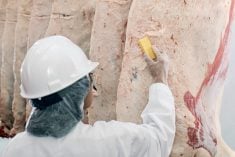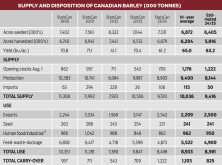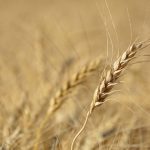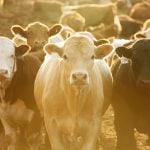The recent holiday season brought the best possible gift to many U.S. cow-calf producers — rain. But two years of extensive drought have had a big impact on U.S. cattle numbers and this might linger in 2023. The silver lining to the drought’s impact is higher prices for all classes of cattle. Cash live cattle prices will see another large year-on-year increase in 2023. Prices are likely to average around US$156-157 per cwt live, versus an average of US$144.41 per cwt in 2022.
Feeder cattle prices will also see a healthy increase. Based in the Southern Plains, a 700- to 800-pound steer will see an average price of US$180-182 per cwt, versus US$168.89 per cwt in 2022, according to the Livestock Marketing Information Center. A 500- to 600-pound steer will see an average price of US$207-209 per cwt, versus an average of US$191.40 per cwt in 2022.
The higher prices, as they were in 2022, will be driven largely by four years of liquidation of the U.S. cattle herd. The January 1 total cattle inventory is expected to be down to 89.5 million head, down 2.4 million head from a year earlier. Commercial cattle slaughter this year is expected to total 32.59 million head, down 5.3 per cent from last year’s 34.39 million head, says the Livestock Marketing Information Center.
Read Also
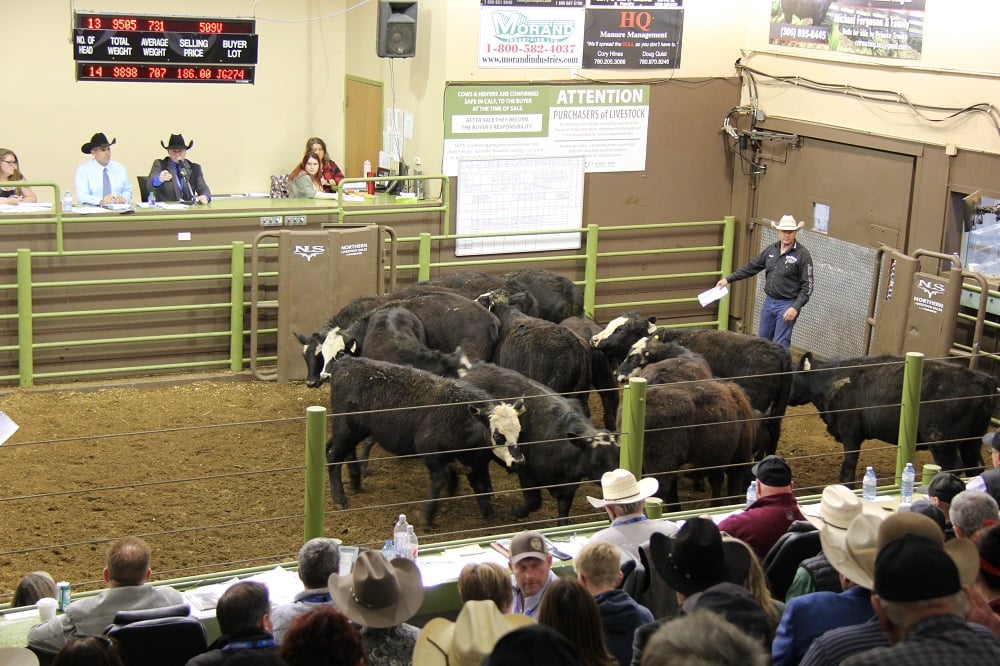
Cattle Market Summary
Break-evens, cow and calf prices, plus market summaries courtesy of Canfax and Beef Farmers of Ontario. Cost of Production September…
This means U.S. commercial beef production in 2023 will total 26.97 billion pounds, down 4.9 per cent from last year. The decline in the slaughter total will be slightly offset by a year-on-year increase in carcass weights, which will average 828 pounds this year versus 825 pounds in 2022, says the Livestock Marketing Information Center.
The projected 1.8-million-head decline in the total slaughter means that both fed and non-fed beef processors will be forced to run their plants at a reduced capacity versus last year. The availability of fed cattle will decline but so too will the availability of slaughter cows because of the big year-on-year increase in cow slaughter in 2022. Packers will likely respond by operating even less on Saturdays than they did in 2022.
Drought will be a key factor this year in the availability of cattle to be placed on feed. Continuing drought in key cow-calf states will continue to push cattle, notably heifers, into feedlots rather than being retained for herd rebuilding. Herd liquidation could linger into 2023 if the drought conditions in 17 states do not improve, says Derrell Peel of Oklahoma State University. The new year is beginning with more of the same. The U.S. has been in significant drought since late 2020 with drought conditions continuing into 2023. The final Drought Monitor of 2022 showed that 74.05 per cent of the U.S. is abnormally dry or worse (D0-D4), with 49.65 per cent of the country in D1-D4 levels of drought, he says.
As 2023 begins, 17 states have a Drought Severity and Coverage Index (DSCI) greater than 150, mostly in the Central Plains and western U.S., says Peel. These drought ratings can potentially range from zero to 500, with zero meaning no part of the area is abnormally dry, and 500 meaning the entire area is in exceptional drought. Six states — California, Kansas, Nebraska, Nevada, Oklahoma and Utah — have a current DSCI over 300, with a maximum DSCI of 358 in Nebraska.
These six states had 6.64 million beef cows at the beginning of 2022, accounting for 22 per cent of the total beef cow herd. No doubt these states have already seen significant herd liquidation in 2022 but they clearly will face more herd liquidation if conditions do not improve, he says. However, the last several weeks of 2022 and the first week of 2023 saw two substantial storms, says Stephen Koontz of Colorado State University. This delayed holiday travel but also put substantial moisture in the Mountain West, some in the Southern Plains and more in the Northern Plains and upper Midwest.





